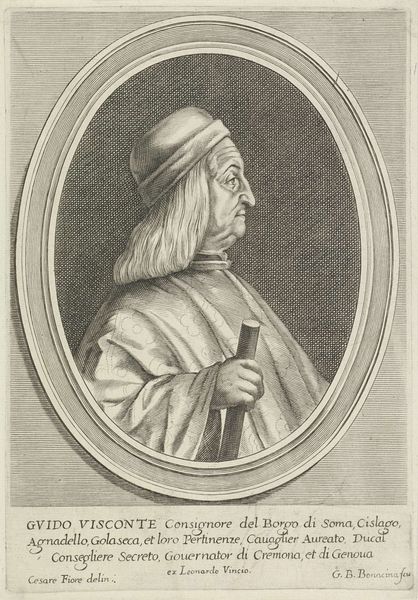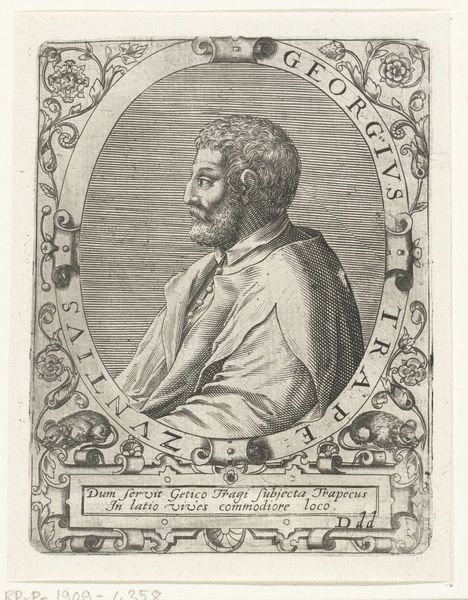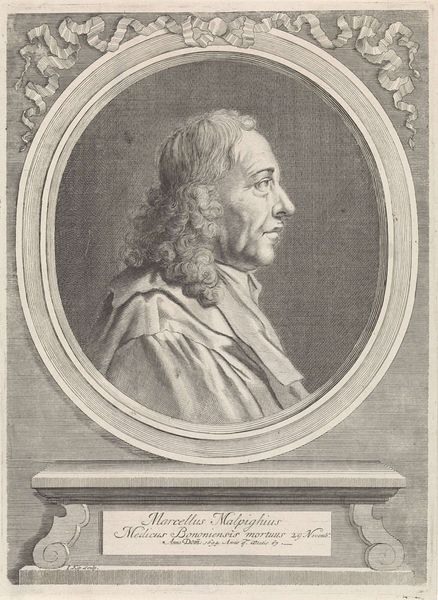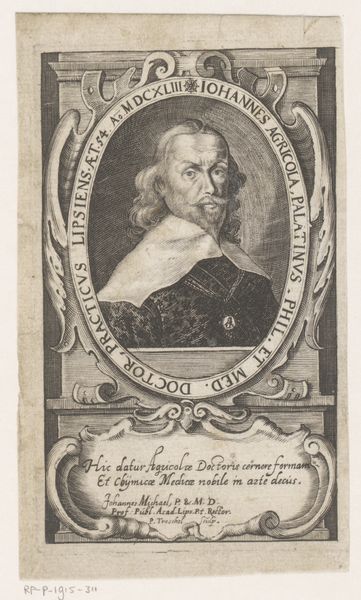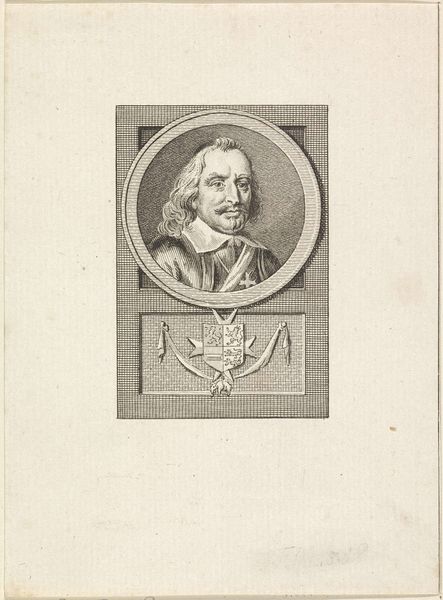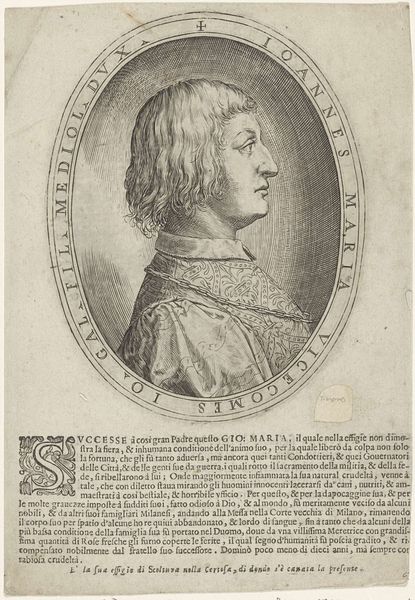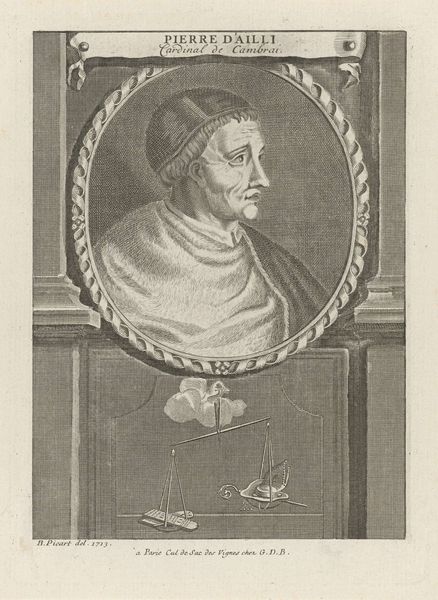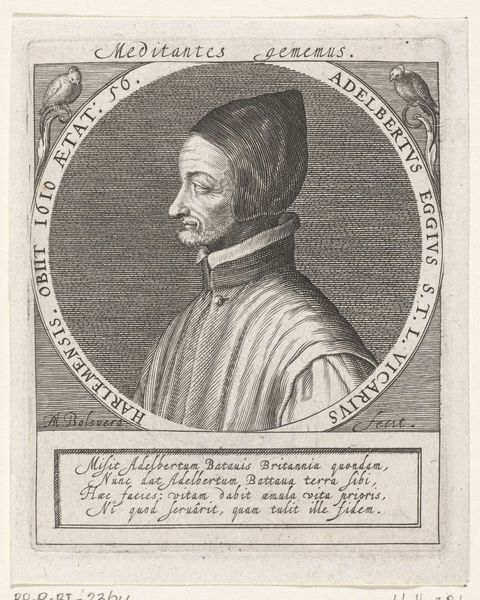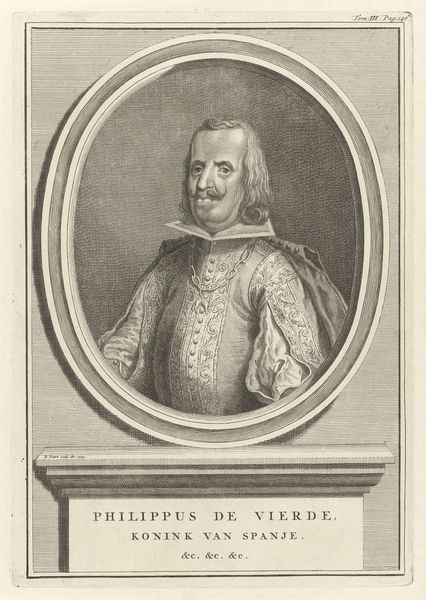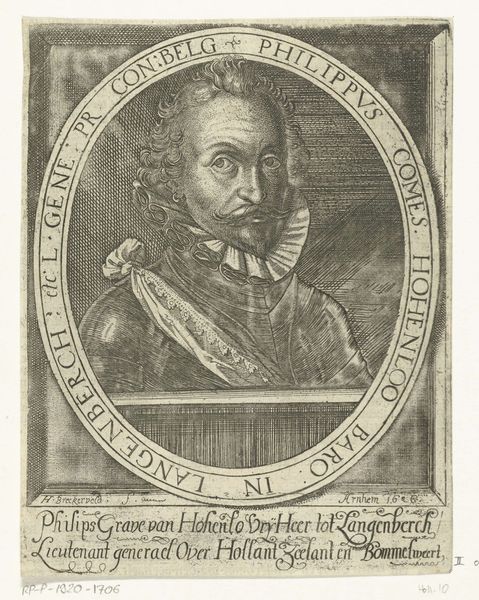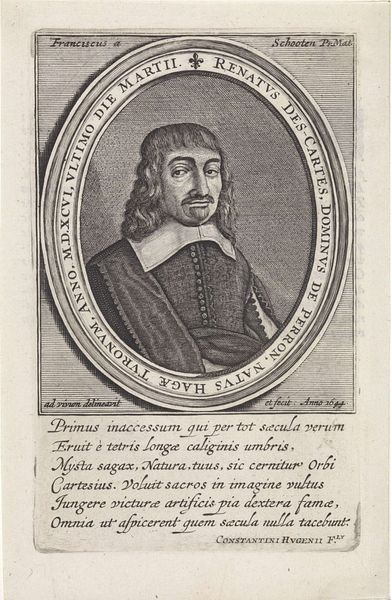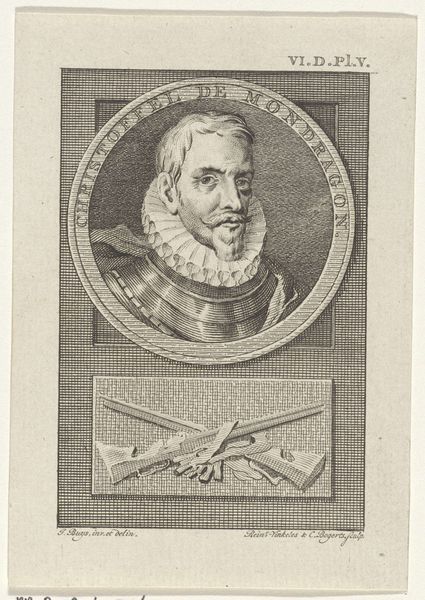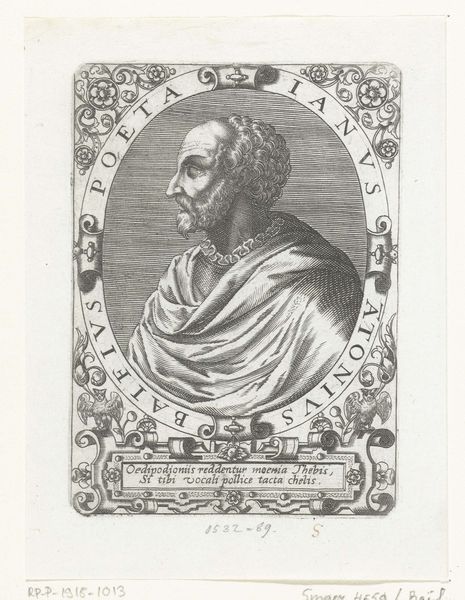
print, engraving
#
portrait
#
baroque
# print
#
old engraving style
#
portrait reference
#
pencil drawing
#
line
#
engraving
Dimensions: height 220 mm, width 160 mm
Copyright: Rijks Museum: Open Domain
Editor: We're looking at "Portret van Battista Visconti," an engraving by Giovanni Battista Bonacina, sometime between 1625 and 1669. It’s at the Rijksmuseum. There's something stark and very formal about it, a kind of severe dignity in his profile. What do you see in this piece? Curator: I see a potent symbol of power dynamics embedded in the very lines of this engraving. Think about portraiture in the Baroque era. Who gets immortalized? Who controls the narrative? Visconti, as the inscription tells us, held considerable political and administrative positions. Editor: So the portrait itself is an assertion of status. Curator: Precisely. And beyond that, consider the male gaze inherent in its creation and reception. The engraver, Bonacina, translates Visconti’s persona for public consumption, reinforcing a specific masculine ideal within the confines of 17th-century societal norms. Who gets remembered and on whose terms? How might the lives of women who had no political representation have differed? Editor: It makes you wonder about all the people who *weren't* getting their portraits made. Curator: Exactly! These aren’t neutral representations. They are deeply coded artifacts. Every choice—the angle, the inscription, the medium—contributes to the construction of Visconti's authority. It highlights what qualities were valued in the ruling class, therefore continuing the circle of inequality. Editor: I’ll never look at a portrait the same way again! Curator: Good. Questioning is the first step towards dismantling systems of power.
Comments
No comments
Be the first to comment and join the conversation on the ultimate creative platform.
